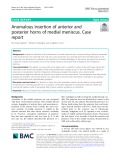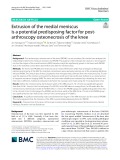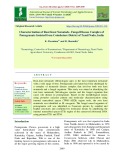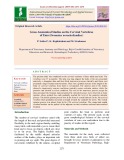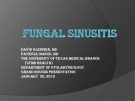
Posterior root
-
Anatomical variations of the attachment of medial meniscus are a common finding. However, anomalies of the posterior horn are extremely rare. Only two cases of posterior root anomaly have been described prior to the routine use of arthroscopy for evaluation and treatment of meniscal pathology.
 4p
4p  vimackenziebezos
vimackenziebezos
 30-11-2021
30-11-2021
 8
8
 2
2
 Download
Download
-
Post-arthroscopic osteonecrosis of the knee (PAONK) is a rare condition. No studies have analyzed the relationship between the meniscus extrusion and PAONK. The purpose of this retrospective study is to test a hypothesis that the degree of the medial meniscus (MM) extrusion might be significantly greater in the knees with PAONK than in the matched control knees both before and after the meniscectomy.
 11p
11p  vimackenziebezos
vimackenziebezos
 30-11-2021
30-11-2021
 11
11
 1
1
 Download
Download
-
This study was aimed at identifying the root knot nematode, Meloidogyne species and the fungal organism that cause wilt disease in pomegranate. Based on the morphological means using posterior cuticular pattern and molecular characterization using internal transcribed spacer (TW81-AB28) region tools, the root knot nematode was identified as M. incognita.
 10p
10p  caygaocaolon11
caygaocaolon11
 21-04-2021
21-04-2021
 11
11
 1
1
 Download
Download
-
The aim of this study was to determine the radiographic, second-look, and functional outcomes after arthroscopic side-to-side repair for complete radial posterior lateral meniscus root tears (PLMRTs). Methods: Patients who underwent arthroscopic side-to-side repair for complete radial PLMRTs were identified.
 6p
6p  vipalau2711
vipalau2711
 30-12-2020
30-12-2020
 14
14
 1
1
 Download
Download
-
Avulsion of the anterior medial meniscus root (AMMR) has a low incidence rate, especially when it is combined with posterior cruciate ligament (PCL) injury, which hasn’t been reported in any literature to date. The aim of this study was to share our experience in the diagnosis and treatment of a patient with traumatic avulsion of AMMR combined with PCL injury.
 5p
5p  vimariana2711
vimariana2711
 22-12-2020
22-12-2020
 12
12
 1
1
 Download
Download
-
There are numerous variations in the pattern of Axillary artery reported by various authors in previous studies; however, in this study more types of variations are found. The axillary artery is a direct continuation of subclavian artery extendind from the outer border of first rib to lower border of teres minor. Normally the pectoralis minor divide the axillary artery into three parts.
 6p
6p  nguaconbaynhay6
nguaconbaynhay6
 23-06-2020
23-06-2020
 8
8
 1
1
 Download
Download
-
The present study was conducted on the cervical vertebrae of three adult emu birds. The vertebrae were 17 in number. The atlas was ring shaped, the body of the axis presented anteriorly, a triangular dens and short thick transverse processes laterally and whose root presented a large foramen transversarium. There was a gradual increase in the length of the body of cervical vertebrae from third to seventeenth. The anterior end of the bodies showed a transversely concave and dorso-ventrally convex articular surface, while the posterior end showed a reverse condition.
 6p
6p  nguathienthan3
nguathienthan3
 27-02-2020
27-02-2020
 15
15
 0
0
 Download
Download
-
Radiographically, the floor of the maxillary sinus appears as a thin radiopaque line (1). If there is little pneumatization of the alveolar process, the floor of the sinus may be seen superior to the roots of the maxillary posterior teeth, or it may not be visible on periapical radiographs. If the maxilla is extensively pneumatized, the floor of the sinus will appear to drape around the roots of the teeth or be superimposed over the roots of the teeth, giving the appearance of the roots penetrating the sinus floor. In these cases, the lamina dura of maxillary posterior teeth...
 0p
0p  nhacnenzingme
nhacnenzingme
 28-03-2013
28-03-2013
 66
66
 4
4
 Download
Download
-
The maxillary sinus continues to grow until eruption of the permanent teeth (4). The adult sinus is variable in its extension, in one-half of cases extending into the alveolar process forming an alveolar recess. In these instances the sinus comes in close proximity to the roots of the maxillary posterior teeth. With the loss of posterior teeth, the sinus can extend further into the alveolar bone, even reaching the alveolar ridge occasionally (4).
 58p
58p  nhacnenzingme
nhacnenzingme
 28-03-2013
28-03-2013
 48
48
 4
4
 Download
Download
CHỦ ĐỀ BẠN MUỐN TÌM








